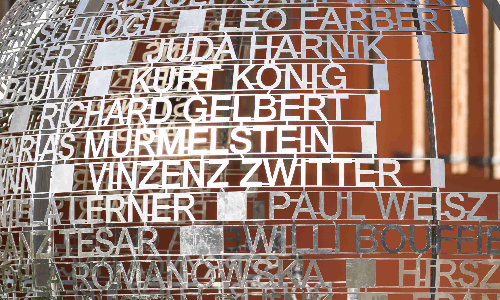New Projects
Microaggression against Jews at the workplace
A preliminary investigation
Researchers: Rebecca Harmata, Yochanan Altman
The current reports of explicit acts of antisemitism are a gross underestimation of the full extent of what Jewish individuals are experiencing daily, contributing to a severe lack of understanding on Jewish experiences in and around the workplace. The inability to assess, evaluate and quantify the more subtle acts of antisemitism, hinder our ability to comprehend the true extend of workplace antisemitism and to develop effective means to combat it. The purpose of the present study is to build upon foundational work identifying and cataloguing microaggressions against religious individuals, to specifically highlight Jewish experiences. More concretely, the present study will be the first to validate Nadal et al.’s (2010) taxonomy of religious microaggressions (i.e., Endorsing Religious Stereotypes, Exoticization, Pathology of Different Religious Groups, Assumption of One’s Own Religious Identity as the Norm, Assumption of Religious Homogeneity, and Denial of Religious Prejudice), with a diverse sample of Jewish voices.
The research questions the present study will aim to answer are:
What themes characterize microaggression experiences of Jewish individuals and how do they manifest in the workplace
How do Jewish employees currently report and cope with religious microaggressions
What is the impact of Jewish microaggressions on important work outcomes such as health and wellbeing, work engagement, performance and careers.
"soft" subconscious antisemitism
A comparative Study of two institutional antisemitic incidents in London: The Royal Court Theatre and The Guardian Newspaper caricatures
Researcher: David Clark
This research will seek to illuminate what happens once it has become clear that a stereotypical antisemitic trope had been presented to the public, possibly unintentionally, and had caused offence to a section of that public. It will compare and contrast incidents at two different public institutions: one case at the Royal Court Theatre in London, and two cases of The Guardian newspaper.
The research project aims to investigate how these cases emerged, the way they were presented in public, the public reaction and the response of the offending institutions.
Big Business Antisemitism
The Dark Core of the ‘Excellence Project’
Researcher: David Collins
Academic responses to In Search of Excellence have focused upon the choices made by Peters and Waterman. Highlighting the conceptual, methodological and empirical failings that characterise this work, a host of commentators have suggested that the text offers a deeply flawed account of the nature of management and its associated processes (see Collins, 2007; 2022). Despite this broadside, the text has had a significant influence upon practice. For example, it effectively spawned that billion-dollar segment of the publishing market that is known as ‘popular management’ (Collins, 2021). In addition – and thanks to the development of international certification programmes designed to assess and advance the practices said to be necessary for business excellence – the text has clearly shaped the manner in which practitioners are now expected to think about, talk about and indeed carry themselves in a managerial fashion (Collins, 2023).
The initial, exploratory work undertaken by Collins built upon a review of the archives of two key US newspapers, The Los Angeles Times and The New York Times and upon longer forms of journalism. Focusing upon the decade just prior to the first publication of In Search of Excellence (1971-1981), Collins sought to establish the extent to which the conduct of those 14 organizations, which Peters and Waterman had highlighted as ‘exemplars’ of business excellence was indeed indicative of an approach to management that was (as Peters and Waterman phrase it) genuinely ‘hands-on; value-driven’. The findings generated by Collins are revealing for they demonstrate wholesale misconduct across these organisations, including anti-trust violations, bribery and corruption, money laundering, sexism and that pernicious species of racism that goes by the name of antisemitism.
Widening the search initially undertaken on the 14 exemplars of excellence to accommodate the archives of The Wall Street Journal, The New York Times, Los Angeles Times, The Times (of London) and The Economist during the decade just prior to the first publication of In Search of Excellence (1971-1981) the intention is to ascertain the extent to which the misconduct so plainly evident across the original sample of 14 organizations is in fact present in the remaining 29 organizations highlighted by Peters and Waterman in their book.
The Ultimate Bystander
Combating Antisemitism At Work Using Artificial Intelligence
Researchers: Yariv Itzkovich, Itzhak Aviv, Orly Barzilai, Yochanan Altman, Michal Lemanski and Florette Cohen
Workplace antisemitism is an under-researched area and thus, even though we evidence an explosion of antisemitism world-wide, its occurrence in the workplace (extent, intensity, the ways it is manifested) and its impact on individuals and organizations remains unrecognized and unencountered.
We wish to engage with verbal antisemitism in a novel way. Verbal violence is often viewed as a two-person interaction. However, bystanders who witness mistreatment in the workplace also play a crucial role in such incidents. Their response, whether active or passive, can impact whether mistreatment, and in our case antisemitism, is tackled at all, when and how.
There has been no use of sensor-based multiple-source technology and implementation of data science techniques that would facilitate the following components of verbal violence, specifically antisemitism mitigation:
identifying occurrences using real-time data;
intervening in real time
predicting occurrences through data collection over time.
The main goal of this research is to gather real-time data on verbal violence in antisemitic incidents within an organizational setting and intervene in these incidents as they occur. The data collected over time will also aid in predicting future incidents of antisemitism. While existing platforms do not gather data from multiple sources, including real-time data, nor provide data analysis and predictive insights into antisemitic incidents to prevent workplace antisemitism, our groundbreaking proposition does.
